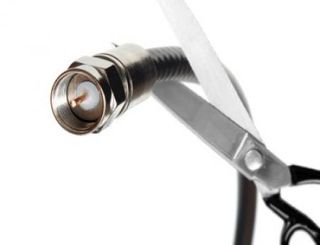Moffett: Let Video Find Its Own Level

Video, after all, really just doesn’t matter.
Cable operators, who have spent the better part of the past two decades trying to stem the rapid loss of video customers have abandoned the chase, instead opting to retain higher margin broadband customers. And according to a report by influential media analyst Craig Moffett, principal and senior analyst at MoffettNathanson, it is about time.
Related: Moffett: Video Just Doesn’t Matter
By focusing on broadband and pretty much letting video customers churn if they want to -- the days of calling your cable company, threatening to leave and getting a free month of HBO to stay are over -- cable operators have seen overall profit margins soar. Companies that had struggled to reach 30% margins while carrying a full load of video services are now approaching 50% overall margins. And Moffett says that is mainly because they are no longer fretting over losing video customers, or offering unprofitable promotions to get them to stay in the bundle.
Nowhere is this more evident than with Cable One, a pioneer among broadband-focused cable companies. Now called Sparklight to emphasize that switch, Cable One’s margins are the highest in the industry -- 47.8%. At Altice USA, which was formed after European telco Altice N.V. purchased Suddenlink and Cablevision Systems, margins have risen substantially from the 30% range before the purchase to more than 40%.
Related: Cable One's Approach Clicks with Investors
“Video subscriber losses are now part of the bull case. In conversation after conversation, investors talk of faster subscriber losses as a clear positive,” Moffett wrote.
Moffett isn't the first to say this. BTIG’s Rich Greenfield has for years touted the allure of over-the-top providers and encouraged cable operators to give up on traditional video distribution.
Moffett and other analysts have hesitated to go all the way out on that limb in the past because of the belief that the bundle of video and data was a powerful tool against the competition. But now, with households getting younger and cord cutting becoming more prevalent, the notion of forcing customers to take a service they don’t want and that loses money for the provider, seems ludicrous.
The math has always been relatively simple. Customers that drop video service but continue to be broadband subscribers pay more for the standalone service -- meaning higher monthly revenue and profit margins for the operator -- and dropping video means lower costs to the operator for repair, maintenance and customer service. Video service traditionally requires more truck rolls and gets more complaints than broadband, Moffett wrote.
That should equal higher profits, but according to Moffett it hasn’t reached the scale where it shows up in financial reports. Until now.
“The change in tone among the major cable operators has been extraordinary,” Moffett wrote. “A year ago, Charter and Comcast were still largely wedded to defending video, even if it meant losing money. Both companies have now made it clear that they won’t continue to chase low value video customers.”
Moffett added that video churn, the main culprit of the cable “bear” case, has gone from feared, to accepted and most recently, to encouraged.
The analyst cautioned that cable isn’t abandoning video -- for operators like Comcast, video is as important as ever -- but more and more are becoming “increasingly comfortable letting video find its own level,” with older customers opting for fuller video packages and younger ones willing to pay more for a robust broadband service only.
Investors are beginning to see the light too, Moffett wrote.
“Just a few years ago, video subscriber losses were the foundation of the cable bear case,” Moffett wrote. “Gradually, that fear faded. Video subscriber losses became something that investors were willing to ignore. Now, it’s something investors are hoping for.”
That is beginning to translate into higher stock prices and multiples. While the sector has performed well this year -- cable distribution stocks were up about 40% in the first half -- it could get even better. Moffett argues that higher margins mean higher multiples and reaching the 50% margin level could bode very well for cable stocks.
Related: Investors Connect with Cable Broadband Strength
Moffett estimated that at 40% margins, cable cash flow multiples would be about 9.6 times. At 45% margins, average multiples rise to about 10.3 times and at 50% margins, they grow to 10.8 times. Factor in the lower capital intensity associated with fewer video customers -- lower programming costs and fewer set-top boxes -- and multiples rise to 11.7% at a 50% margin.
Understandably, the picture is not as bright for programmers. While virtual MVPDs and other OTT players could theoretically absorb nearly all of the traditional video customer losses, Moffett adds that it is more likely that they capture a fraction of the declines.
“There’s simply no good way to spin the story for programmers like Comcast’s NBCU cable networks, or AT&T’s Turner networks,” Moffett wrote, adding that the complexity is probably why Comcast has underperformed its peers while outperforming the general market.
“But Charter and Altice USA are cleaner stories,” Moffett continued. “And their shares have performed markedly better, even after considering their higher leverage levels.”
Multichannel Newsletter
The smarter way to stay on top of the multichannel video marketplace. Sign up below.
